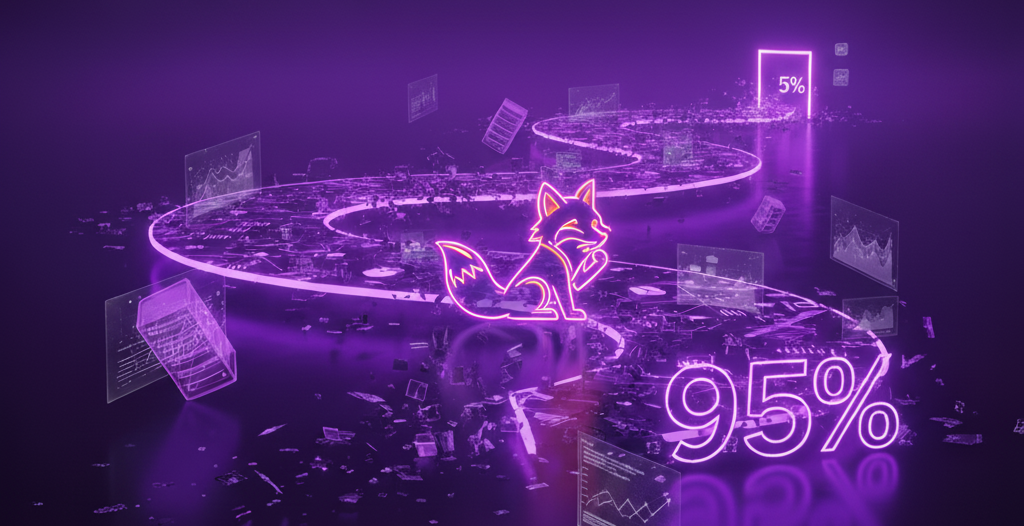
On August 28, 2025, Bitnami is flipping the switch on its container image distribution model, effectively ending free access to production-grade container images that power millions of Kubernetes clusters worldwide. If you’re running Postgres, Redis, Kafka, RabbitMQ, NGINX, or any of Bitnami’s 280+ application catalog, this seismic shift demands your immediate attention.
For Draftt.io customers, you’re a step ahead, our platform flagged affected resources a month ago and provided tailored mitigation plans to ease this transition.

Here’s why this change is a game-changer for the cloud-native ecosystem and what you need to do now.

The Nuclear Option: What’s Actually Happening
Bitnami is pulling a “freemium to premium” move, reshaping its entire catalog:
What’s Disappearing (Free Tier):
- All versioned container images (anything not tagged “latest”)
- Most of the 280+ application catalog
- Regular security updates for free users
- Production-ready container images without a subscription
- Debian-based community images (replaced with Photon Linux or distroless bases)
What’s Left for Free:
- A small subset of “development-only” images
- Only “latest” tags (no version pinning)
- Limited application catalog
- No production support or guarantees
What’s Paywalled:
- Bitnami Secure Images (BSI): Full version history, hardened distroless bases, SBOMs, KEV transparency, attestations, and enterprise support for a price starting at $72,000 per year ($6,000/month) based on some reports on Reddit.
Exceptions:
- Sealed Secrets and minideb continue as usual under docker.io/bitnami.
The Bitnami charts repo, with ~10,000 stars and forks, is embedded in CI/CD pipelines, Helm charts, and clusters everywhere. This isn’t a niche issue. It’s a supply chain event.
The True Cost: Beyond the Price Tag
Immediate Financial Impact
The reported $72,000/year subscription for Bitnami Secure Images could translate to six-figure cost increases for organizations running hundreds of workloads across multiple clusters. For many, this is a budget shock for infrastructure that was previously free.
The Upgrade Treadmill Trap
Bitnami’s model forces a brutal choice:
- Pay for BSI: Shell out $72,000/year for what used to be free.
- Use “latest” tags: Abandon version control, risking deployment chaos, compatibility issues and compliance violations.
Version pinning is non-negotiable for reproducible deployments, rollbacks, and compliance. Both options break modern DevOps practices.
Dependency Hell Multiplied
Bitnami images underpin countless Helm charts, CI/CD pipelines, and automated systems. This change triggers cascading failures:
- Helm Charts Breaking: Charts expecting specific image versions will fail.
- CI/CD Pipeline Failures: Missing image references will halt automation.
- Security Scanning Disruption: Tools relying on consistent tags will break.
- Compliance Violations: Audits requiring specific versions are now at risk.
Silent Breakage Risk
Post-August 28, clusters pulling docker.io/bitnami/<app>:<version> may hit ErrImagePull or ImagePullBackOff if the image has moved to the unmaintained bitnamilegacy/ repository.
The Migration Nightmare: Three Bad Options
Bitnami offers three paths, none ideal:
Option 1: Legacy Repository Limbo
- Repoint to bitnamilegacy/<image>.
- Pros: Buys time.
- Cons: No security updates, no support, compliance risks, and a temporary fix.
Option 2: Pay the Broadcom Enterprise Tax
- Subscribe to Bitnami Secure Images for $72,000/year.
- Pros: Hardened images, regular updates, full version catalog, enterprise support.
- Cons: High cost for what was once free.
Option 3: “Latest” Tag Russian Roulette
- Use free “latest” tags from the limited community catalog.
- Pros: Free, minimal setup.
- Cons: No version control, unpredictable updates, impossible rollbacks, unsuitable for production.
Industry-Wide Implications
This isn’t just about Bitnami. it’s a warning for the cloud-native ecosystem:
- Precedent Problem: If Bitnami’s paywall succeeds, expect Docker Hub, Quay, or others to follow.
- Supply Chain Vulnerability: Over-reliance on free third-party images exposes systemic risks.
- Open Source Impact: Projects dependent on Bitnami images face tough distribution choices.
Action Items: What You Need to Do RIGHT NOW
If you’re a Draftt.io customer, you’re ahead of the curve. We flagged all affected Bitnami resources in your infrastructure a month ago and provided mitigation plans to streamline your response. Not a customer? Here’s how to catch up:
Phase 1: Immediate Assessment (Complete by August 1st)
- Audit Your Image Dependencies
# Cluster inventory
kubectl get pods -A -o jsonpath='{range .items[*]}{.metadata.namespace}{"\t"}{.metadata.name}{"\t"}{range .spec.initContainers[*]}{.image}{"\n"}{end}{range .spec.containers[*]}{.image}{"\n"}{end}' | grep -E '(^|/)bitnami/'
# Helm releases
helm ls -A -o json | jq -r '.[] | [.name,.namespace] | @tsv' | while IFS=$'\t' read -r rel ns; do echo "=== $ns/$rel ==="; helm get values "$rel" -n "$ns" | grep -nE '(^\s*image:|repository:).*bitnami'; done
# Git repos
git grep -nE 'image:.*(docker\.io/)?bitnami/'
Identify Critical Workloads
- List applications using Bitnami images.
- Classify by business impact (critical/high/medium/low).
- Document version pins and update needs.
Calculate Financial Impact
- Count Bitnami image dependencies.
- Estimate BSI costs ($72,000/year).
- Compare against alternative solutions.
Phase 2: Strategic Decision Making (Complete by August 15th)
Evaluate Alternatives
Popular Apps (PostgreSQL, Redis, MySQL):
- Official Images: postgres:15, redis:7-alpine, mysql:8
- Cloud Provider Images: AWS RDS, Azure Cache
- Alternative Vendors: Crunchy Data, Redis Enterprise
Complex Apps (Kafka, Elasticsearch):
- Operator-based: Strimzi, ECK
- Cloud Managed: Amazon MSK, Elastic Cloud
- Enterprise: DataStax, Confluent
Dev Tools:
- Official Docker images
- GitLab/GitHub Container Registry
Build Migration Strategy
- Create an image migration matrix.
- Identify apps requiring BSI.
- Plan testing for alternative images.
- Document configuration changes.
Phase 3: Implementation (Start Immediately)
- Gradual Migration
# Before: image: bitnami/postgresql:15.3.0
# After: image: postgres:15.3-alpine
- Update CI/CD Pipelines
- Modify build scripts for new images.
- Update manifests and test deployments.
- Revise documentation and runbooks.
2. Security and Compliance
- Update scanning tools for new images.
- Verify compliance with new images.
- Monitor for vulnerabilities.
Phase 4: Risk Mitigation
Image Registry Strategy
- Set up a private registry (Harbor, AWS ECR, Google Artifact Registry).
- Mirror critical images to avoid external dependencies.
- Implement image promotion workflows.
Monitoring and Alerting
- Monitor image pull success rates.
- Alert on ErrImagePull or ImagePullBackOff.
- Track vulnerabilities and deployment success.
Alternative Solutions: Your Escape Routes
For Small to Medium Organizations
Option A: Official Images + Cloud Services Hybrid
- Use official Docker images and managed cloud services.
- Cache images in a private registry.
- Cost: Moderate, predictable.
Option B: Alternative Container Providers
- Chainguard Images, Google Distroless, Red Hat UBI.
- Cost: Varies, often cheaper than BSI.
For Enterprise Organizations
Option C: Container Platform Strategy
- Private registry with governance.
- Cost: High upfront, better long-term control.
Option D: Multi-Cloud Strategy
- Distribute workloads across cloud providers.
- Use managed services to reduce third-party dependency.
- Cost: Increased complexity, better diversification.
Conclusion: Act Fast, Plan Smart
Bitnami’s August 28th deadline is non-negotiable, and unprepared organizations face security risks, operational toil, or steep costs. Draftt.io customers got a head start with early alerts and mitigation plans, but everyone needs to act now. The silver lining? This disruption forces stronger, vendor-independent infrastructure. Teams that tackle this head-on will build more resilient systems.
The clock is ticking. August 28th is coming.
Need Help?
Are you facing this challenge? We’ve helped teams navigate complex cloud-native transitions and can assist with:
- Infrastructure dependency auditing. Understand your current state and existing risks.
- Migration, upgrade and risk mitigation planning
- Automating End-of-Life Identification, Prioritization and Mitigation
Don’t wait until August 27th.
Book a call using this link: https://calendly.com/draftt/intro
Let’s turn this crisis into an opportunity for better systems.

.png)






.webp)
